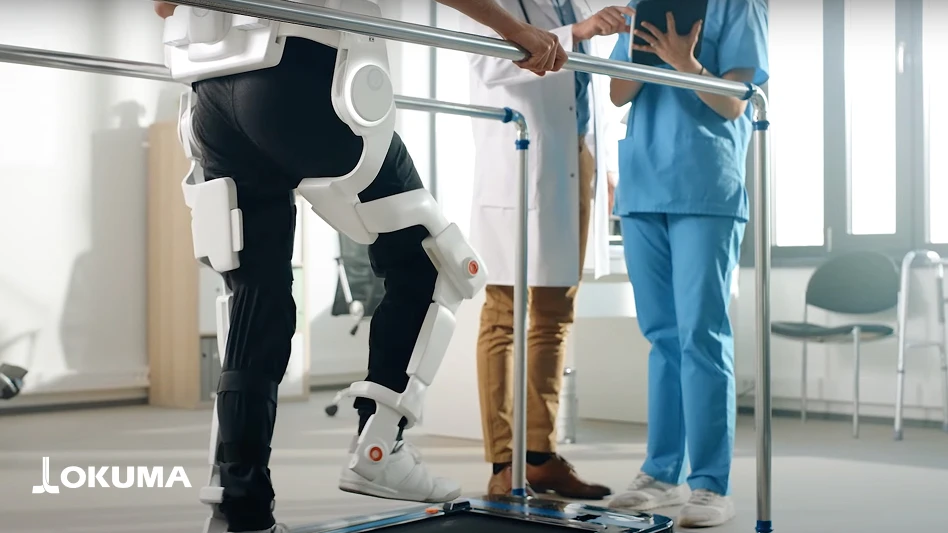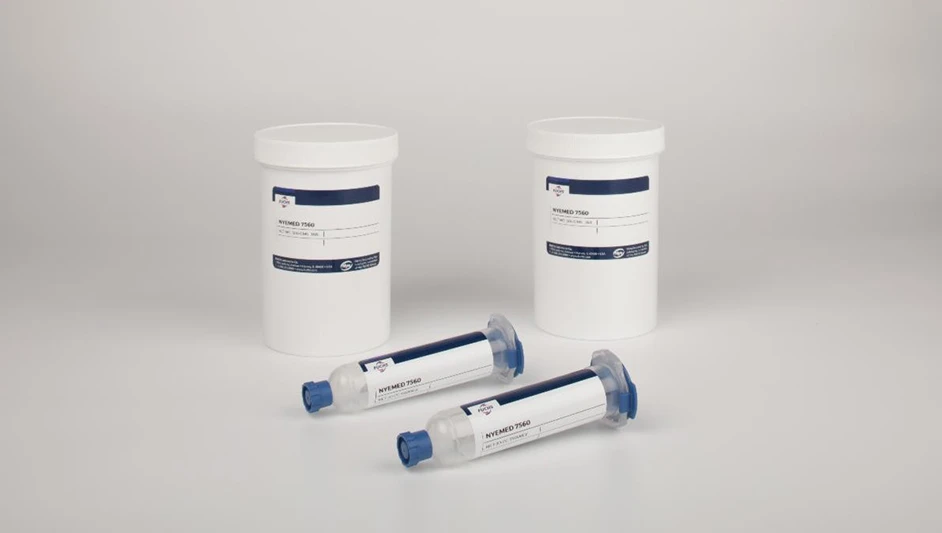 Supplying medical gases to hospitals, mobile health providers, and in-patient care environments requires absolute conformance to stringent industry standards. As a result, manufacturers, distributors, and facility safety managers must have complete confidence in supply quality and continuity.
Supplying medical gases to hospitals, mobile health providers, and in-patient care environments requires absolute conformance to stringent industry standards. As a result, manufacturers, distributors, and facility safety managers must have complete confidence in supply quality and continuity.
It is important to note that while accredited governing bodies do set critical industry health and safety guidelines, they neither evaluate nor inspect medical gas equipment, facilities, pipelines, or other infrastructure. Compliance is therefore the direct responsibility of the medical gas OEM, along with the individual facilities where gases are delivered. To achieve required high-accuracy monitoring and control, design engineers typically specify pressure sensors, switches, and isolation valves within finished system designs. For larger or more complex projects, they also outsource the design of custom manifolds, which integrate sensors, switches, valves, and other components into a single control module.
For more than 20 years, Gems Sensors & Controls engineers have helped OEMs address the often-complex instrumentation requirements of medical gas delivery systems. Successful applications include the monitoring of oxygen, helium, xenon, carbon dioxide, and nitrous oxide; medical and surgical air; compressed air; and vacuum systems. Typical requirements can range from a few dozen pressure switches and valves to the custom OEM volume manufacturing of fully degreased, oxygen-compatible sensors or the full instrumentation of medical gas distribution pipelines. Regardless of requirement, an advantage exists for medical gas OEMs in the capability to specify a broad range of required instrumentation, in multiple ranges and types, from a single source. Following are several key considerations for medical gas delivery systems.
Portable medical gas cylinder
European Pharmacopoeia sets stringent definitions for the maximum allowable concentration and stability of delivered patient oxygen. Without exception, medical gas OEMs must specify instrumentation that is in strict conformance with these standards. Smaller and more mobile health care environments, such as ambulances and temporary triage centers, rely upon portable, replaceable supply cylinders for patient-inhaled oxygen delivery.
Due to the wide external temperature ranges over which portable changeover systems must operate, cylinder setups are also instrumented with safety alarms. High-pressure alarms signal higher temperatures and increased risk of gas store depletion caused by evaporation. Low-pressure alarms can signal pending cylinder changeover requirements.
 Pressure monitoring ranges vary, depending upon the medical gas type, so choosing the right sensor is essential. Specified instrumentation, such as pressure transducers, can accurately monitor the cylinder pressure levels of oxygen, nitrous oxide, and other medical gases. Typically installed between the cylinders and gas delivery system, they also help to determine proper cylinder supply changeover criteria and timing. One transducer is used to measure incoming delivered gas supply pressure while the other measures supply feed pressure to the distribution system. This process ensures that consistent pressure levels are maintained within a specified range.
Pressure monitoring ranges vary, depending upon the medical gas type, so choosing the right sensor is essential. Specified instrumentation, such as pressure transducers, can accurately monitor the cylinder pressure levels of oxygen, nitrous oxide, and other medical gases. Typically installed between the cylinders and gas delivery system, they also help to determine proper cylinder supply changeover criteria and timing. One transducer is used to measure incoming delivered gas supply pressure while the other measures supply feed pressure to the distribution system. This process ensures that consistent pressure levels are maintained within a specified range.
For cylinder alarms, medical-grade pressure switches are installed to provide effective early warning of possible supply system risks, as well as leaks or blockages. They are also used to facilitate the switch of cylinders from standby to on-duty modes.
Gems designs and manufactures complete pressure manifolds for these applications so that several medical gas cylinder banks can be monitored simultaneously. The manifolds consist of a Gems PS31 pressure switch, which incorporates special Kapton polyimide diaphragms, and various isolation valves. Design of these diaphragms allows the pressure switches to maintain their physical properties and performance stability across a wide operating temperature range. Due to their high chemical resistance, and with no known organic solvents, the switch is also compatible with a variety of medical gases.
In addition, Gems pressure sensing instrumentation is used to monitor cylinders, alarms, and inhaled nitrous oxide supplies. Inhaled nitrous oxide has proven effective within neonatal intensive care units for the treatment of newborn hypoxemic respiratory failure.
Compressors and vacuum systems
Surgical and medical air is essential for safe operating theaters, patient hospital wards, and intensive care units. Compressed air helps medical professionals deliver proper surgical anesthesia and inhaled patient oxygen concentrations. It also powers diagnostic and surgical equipment, dental drills, and other non-critical medical devices.
Medical and surgical air is typically produced via specialty water- or air-cooled compressor systems. In order to remain effective, a compressor must be clean and dry, as well as dust-, mold-, and oil-free, throughout its operation. It also must reliably perform to varying set pressure levels. To ensure this, compressors are instrumented with both an automatic manifold panel and a manifold reserve, each programmed to a predefined buffer pressure range. In the event that an automatic manifold is exhausted, a secondary emergency reserve manifold engages, ensuring uninterrupted airflow. Both manifolds require accurate, continuous pressure-level monitoring.
Rugged, stainless steel pressure sensors are often specified within these generator systems. The sensors form part of a control circuit that activates and deactivates the compressor, allowing it to automatically monitor supply pressure. The proper sensors ensure that buffer pressure remains within its predefined range. These sensors can reliably operate across a variety of pressure settings with low thermal errors and a wide temperature compensation range. Sensors may also be customized with application-specific pressure ranges, ports, connectors, cables, and electrical outputs. In addition, stainless steel pressure sensors, such as the Gems 3100, will act as an alarm should levels fall below acceptable values. Data from these sensors provide important overall compressor health assessments.
Medical vacuum systems, such as compressed air, operate from a centrally controlled source. The systems are essential for surgical suction as well as for generating negative pressure conditions within environmental chambers. Here, pressure transducers are used for critical level monitoring, alarm activation, and support of the central vacuum generator control circuit. The Gems 3500 series pressure transducer works with these applications and can accurately cover a range of -1 bar to 1 bar in its compound form. This allows for the specification of a single pressure transducer model for a multitude of vacuum systems.
Distributed MGPS
Medical gas pipeline systems (MGPS) are used to transport a variety of often-combustible medical gases, including oxygen, medical air, and anesthesia, from central and secondary stores into designated areas. Standards ensure conformance with National Fire Protection Association (NFPA) guidelines. Typically constructed of copper, MGPS support high- and low-pressure medical gas delivery within hospitals, laboratories, and other clinical environments.
 Basic medical gas pipeline infrastructure consists of a main line connecting the gas media supply to the risers, risers which connect the main line to lateral pipelines, and lateral pipelines which feed into a branch room, or set of rooms, within the medical care environment. These pipes are installed in plain view within the health care setting.
Basic medical gas pipeline infrastructure consists of a main line connecting the gas media supply to the risers, risers which connect the main line to lateral pipelines, and lateral pipelines which feed into a branch room, or set of rooms, within the medical care environment. These pipes are installed in plain view within the health care setting.
All MGPS must be tested extensively prior to use to ensure adequate gas delivery pressure, supply regulation, and control. To ensure such functionality, MGPS must also be continuously monitored for pressure and temperature variations and extremes. Sensors implemented within these environments are used to provide critical early warning of impending pressure drops or overpressures.
The highly corrosive nature of certain gas media makes MGPS prone to corrosion, moisture, mold, pressure stresses, and other mechanical damages, factors that over time can contribute to pipe leakages. In an oxygen delivery environment, such leaks can lead to fire or combustion, and damage patient health because of depleted oxygen stores. Cross-leakage can further increase patient hypoxia risks.
Main MGPS supplies are controlled via manifolds. The manifolds allow for the manual or automatic switching of primary and secondary supplies between alternating stores. Gas is then transported through the main line. These systems also include a manual shutoff function in an emergency.
Instrumentation requirements call for the monitoring of individual pipelines using specifications based upon the type of measured gas media and untapped emergency stores. Vacuum air pressures are also monitored. Pressure switches and transducers monitor general pressure levels and alarm users to any leaks or overpressures. The main trunk system from the source often operates at 400 bar or 200 bar, with typical step-down distribution channels to 25 bar and 16 bar at a room level (sometimes as low as 10 bar). Pressure transducers and switches are placed strategically within the system to monitor pressure levels and alarm for any unusual conditions.
Selected instrumentation must be able to withstand higher-than-typical pressure levels. Pressure sensors typically would operate at 12V or 24V, with 4mA to 20mA or 0.5V to 4.5V output. An IP67 rating ensures continued sensor reliability within possible splash environments. Gems 3500 and 3100 series pressure transducers and associated switches are recommended for MGPS applications. Their versatility and interchangeability support a wide range of MGPS points. Engineers can also customize sensor settings for specific gas media compatibility and other requirements.
Both sensors series feature high-accuracy and reliability with low thermal errors and wide temperature compensations. Their compact size facilitates installation within the space constraints of a typical MGPS environment.
In addition, Gems pressure switches are offered with a variety of pressure ranges, from miniature vacuum switches to units more than 400 bar. Their size-to-pressure ratio allows them to monitor pipeline infrastructure within confined spaces. All switches are available with custom set points.
Ensuring absolute compliance
The specialty nature of medical gas delivery systems, along with their critical end use, often creates complex requirements. As the burdens of stringent regulatory compliance are left to the OEMs and health care facilities themselves, effective system monitoring is essential. Specified sensors and switches must be fully gas media compatible, highly robust, accurate, and compact. Instrumentation must be free of contamination risks and have the option for rapid customization. Choosing a company with expertise in these applications, technical capabilities, and rapid customer response can offer medical gas OEMs an effective partner for such requirements.
Gems Sensors & Controls
www.gemssensors.com
About the authors: Vincent Ellis is a Gems Sensors & Controls key account manager, Medical – Europe and Molly Bakewell Chamberlin is with Embassy Global LLC. Ellis can be reached at sales@gems-sensors.co.uk, info@gemssensors.com, 855.877.9666, or 44.0.1256.320244, and Chamberlin can be reached at 800.309.6150 or mchamberlin@embassyglobalpr.com.

Explore the January February 2015 Issue
Check out more from this issue and find your next story to read.
Latest from Today's Medical Developments
- Meet digits: The future of adaptive haptic interfaces
- Maximize space and accuracy with OES's latest vertical stage
- Forkardt Hardinge strengthens market position with ATS Systems acquisition
- July is for learning – so drop in for this month’s second Manufacturing Lunch + Learn
- MMT expands capabilities with acquisition of Comco
- Essential strategies to protect your data
- TT Electronics achieves ISO 13485 medical certification at Mexicali EMS facility
- Boost productivity with Nidec's innovative MGC300





